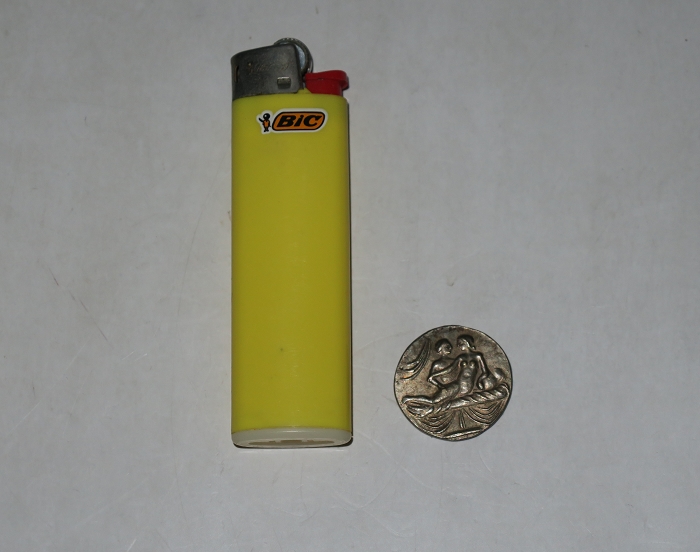
法国和日本惯例,买书因为价格原因就差最后一口,通常以赠品方式皆大欢喜。
这次的赠品很有意思,竟然是传说中古罗马春宫币(Spintria)的仿品。所谓仿品,也是100年前的手工老仿,和淘宝烂大街的量产货不可同日而语。
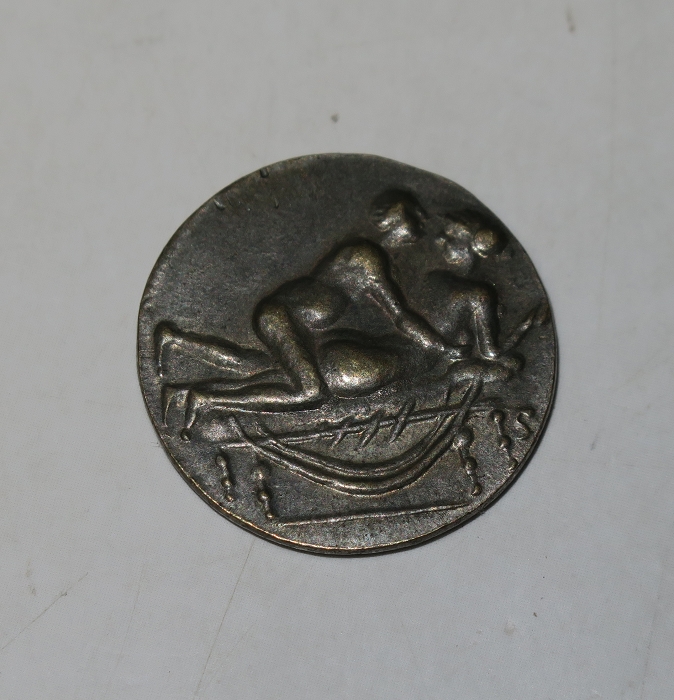
这种小东西究竟属于货币还是筹码,自古争论至今,目前还没有结论。洋荤在亚洲极为罕见,手头没有相关资料。查了下英国的维基百科,梳理基本资料如下。以英文版为准,中文版仅供参考。
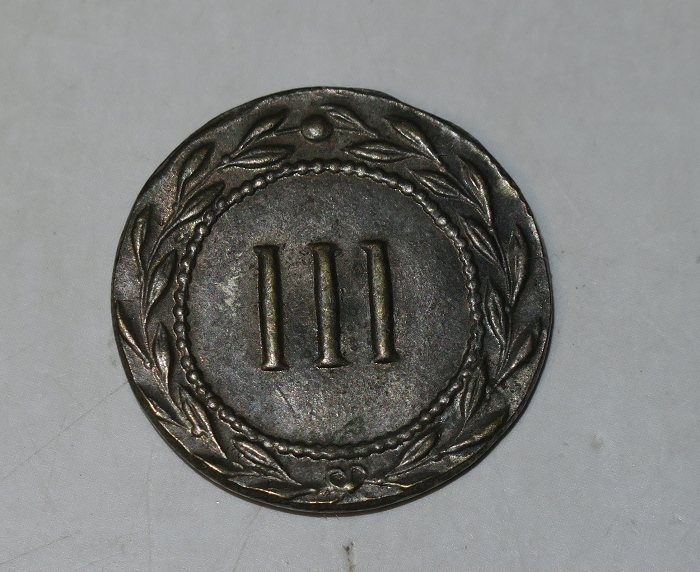
顺便说,很多地沟油吃多了想当然的以为维基百科是自动翻译。有这种想法的尽快治病,智商癌晚期无药可救。各国维基百科都是独立的,中国由于众所周知的原因,简体和繁体版都没有参考价值。
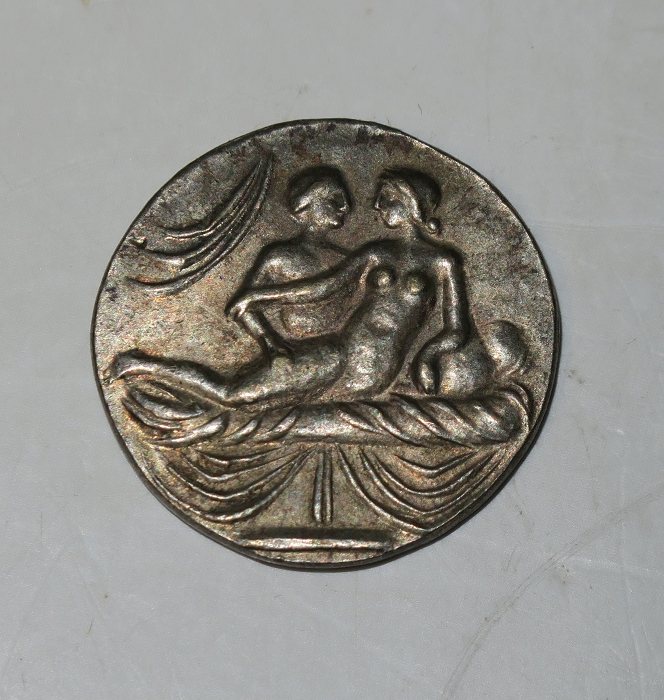
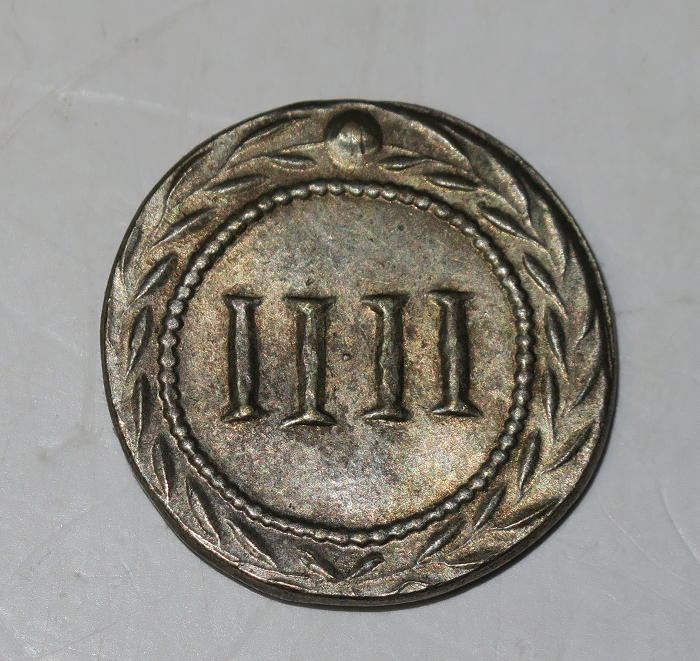
Spintria(复数spintriae)是一个小的青铜或黄铜罗马标志,可能用于妓院,尽管关于 spintriae 的文献中没有任何证据支持这一说法。记号通常在正面描绘性行为题,而背面则描绘了1-16(I–XVI)范围内的数字。
它们通常由黄铜或青铜制成,比一枚50欧分硬币(0.5欧元)略小。一些专家提出了描述男性同性恋行为的假说,但并未被广泛接受,因为权威专家(Buttrey;Jacobelli;Talvacchia)断言色情场景完全是异性恋。
用Spintria来指代年轻男妓,源自希腊语 σφιγκτήρ (sphinktḗr,肛门)。16世纪该单词演变为古代犯下无耻行为的人——换言之,超出被认为是规范的性行为和感官行为——或发生无耻行为的地方,以此成为代币本身的专用名词。Bette Talvacchia 首次使用spintriae一词来指代 Sebastiano Errizo1559年发表的《关于古代奖章的论述》(Sopra le Medaglie Antiche,威尼斯,1559)中出现的记号。
一些学者根据弗里德兰德(1886)的建议,认为代币用于“auf die man in Bordelle Einlass erhielt”(进入妓院),他们争辩说spintriae 是用来支付妓女的,尽管没有人提供任何支持证据。
Buttrey对妓院象征性的想法不屑一顾,声称“没有任何证据证明这一点”(Buttrey 1973,P53)。目前只有 Simonetta 和 Riva 是妓院代币假说的支持者,该假说也很受媒体欢迎(参见 Duggan 2016)。
然而,没有直接古代证据支持以下理论,即Spintriae是作为代币代替官方货币而创造的。钱币学家 Theodore V. Buttrey 建议将它们视为游戏筹码。
经济学家Geoffrey Fishburn和Jacobelli认为它们可能被用作储物柜令牌,Duggan指出没有考古发现证实Spintriae是游戏筹码。他得最令人信服的解释是它们起到了储物柜令牌的作用,似乎只存在了很短时间,主要是公元1世纪。
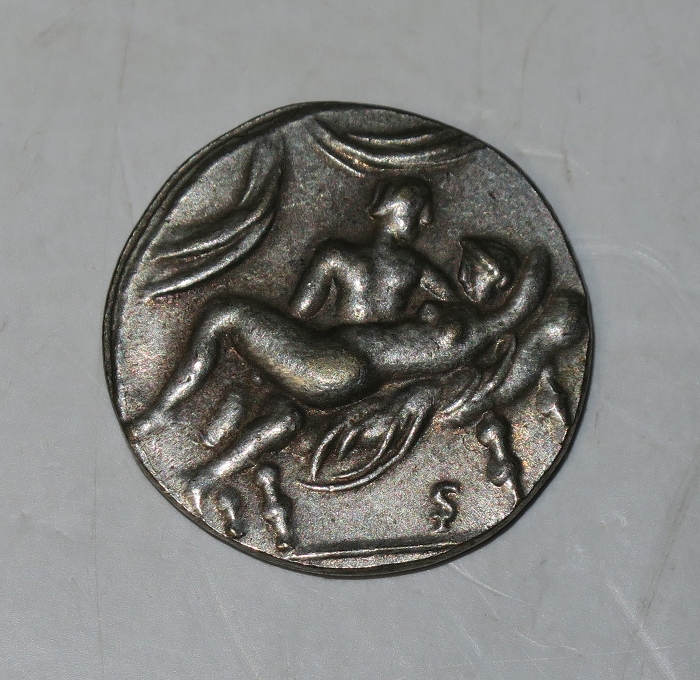
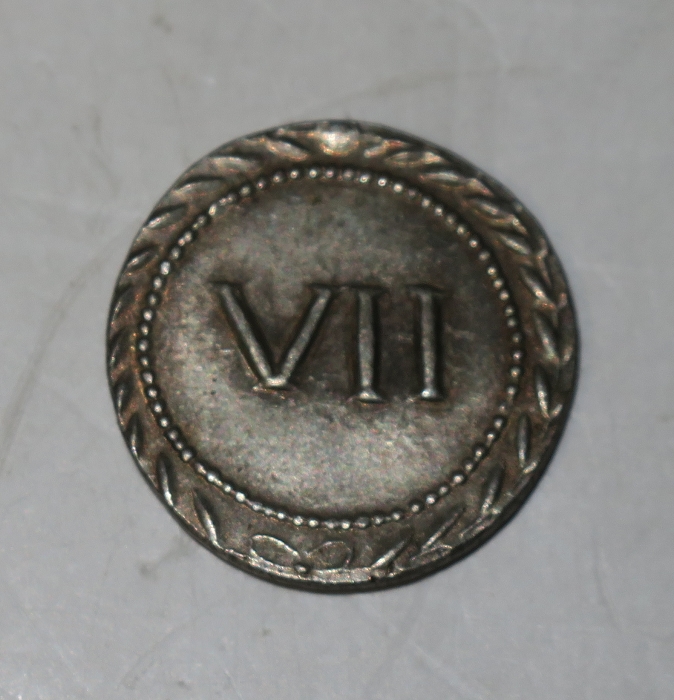
A spintria (plural, spintriae) is a small bronze or brass Roman token, possibly for use in brothels, although none of the literature on the spintriae contains any evidence to support this assertion. The tokens usually depict on the obverse a motif of sexual acts or symbols and a numeral in the range I – XVI on the reverse.
They were usually struck from brass or bronze, and were little smaller than a 50 euro cent coin (€0.50). Some commentators suggest some of the tokens depicted homosexual acts between men, but this is not widely accepted in the literature, as some authors (Buttrey; Jacobelli; Talvacchia) assert the erotic scenes are exclusively heterosexual.
Spintria was used by Suetonius to refer to young male prostitutes,from Greek σφιγκτήρ (sphinktḗr, [anal] sphincter). In the 16th century, the name passed from the ancient sense of the persons committing outrageous acts–in other words, sexual and/or sensual acts outside what was considered the norm–(or the place where outrageous acts occurred,) to the tokens themselves. Bette Talvacchia identifies the first usage of the term spintriae to refer to the tokens as occurring in Sebastiano Errizo’s 1559 treatise, Discourse Concerning Ancient Medals (Sopra le Medaglie Antiche, Venice, 1559).
Some scholars, following Friedlander’s (1886) suggestion that the tokens were used “auf die man in Bordelle Einlass erhielt” (“to obtain entry to brothels”) have argued that spintriae were used to pay prostitutes, although none offer any supporting evidence.
Buttrey is dismissive of the brothel token idea, asserting “there is no evidence for any of this” (Buttrey 1973, p. 53). Currently, only Simonetta and Riva are supporters of the brothel token hypothesis, which is also popular with the media (see Duggan 2016).
There is no direct ancient evidence, however, to support the theory that spintriae were created as tokens for exchange in place of official coinage. Numismatist Theodore V. Buttrey suggests that they were used as game pieces.
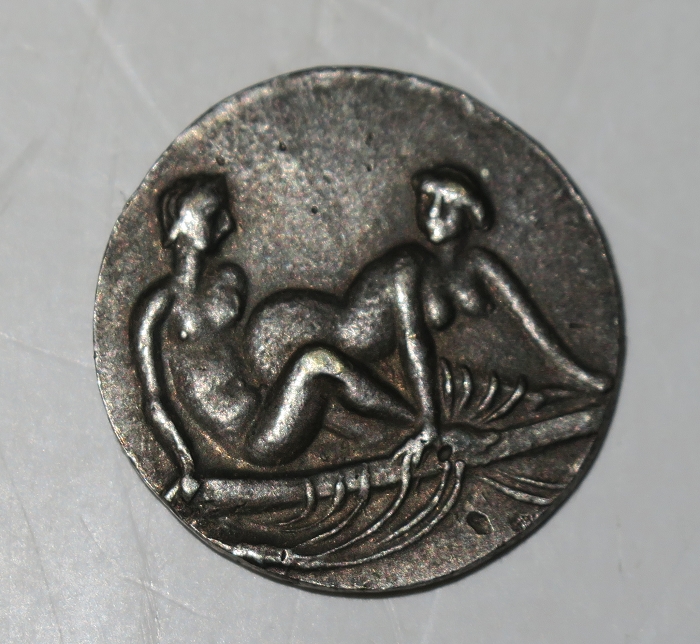
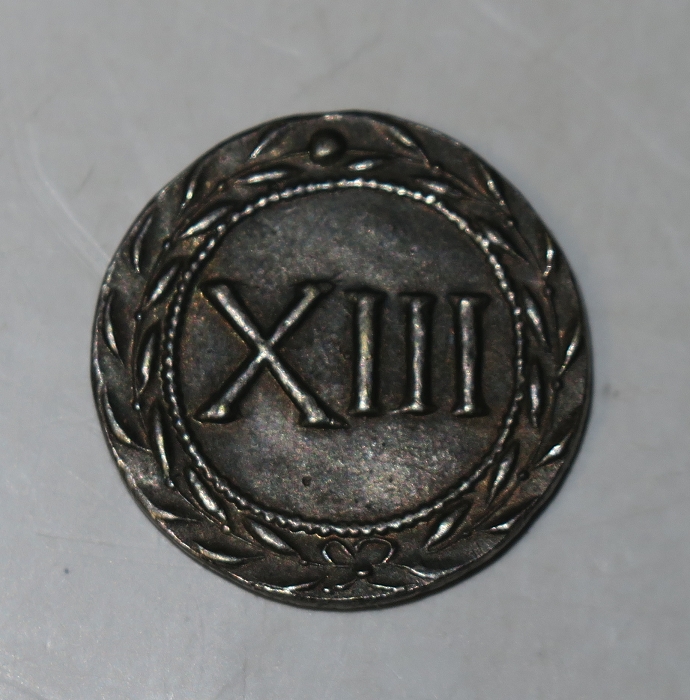
although Duggan (2016) notes there are no archaeological finds to confirm the spintriae were gaming pieces.Economist Geoffrey Fishburn, following Jacobelli, suggests they may have been used as locker tokens. Duggan concludes, after Fishburn and Jacobelli, that the most convincing explanation is that they functioned as locker tokens.They seem to have been produced for only a short period, mostly in the 1st century AD.